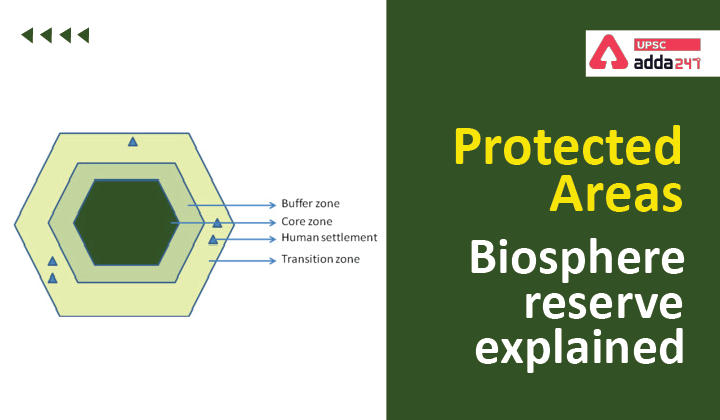Table of Contents
In our earlier articles, we have dealt with the list of biosphere reserves in India. We have already explained the below topics in our articles:
Difference between national park and wildlife sanctuary.
Difference between conservation reserve and community reserve.
In this article, we will discuss the topic of biosphere reserve comprehensively. Biosphere reserves (BRs) are one of the important topics that should be covered by the UPSC aspirants comprehensively. BRs can be asked in both the phases of IAS exam—IAS exam prelims and IAS exam mains.
What are Biosphere Reserves?
- Biosphere reserves are ‘learning places for sustainable development’.
- They are sites for testing interdisciplinary approaches to understanding and managing changes and interactions between social and ecological systems, including conflict prevention and management of biodiversity.
- They are places that provide local solutions to global challenges.
- Biosphere reserves include terrestrial, marine and coastal ecosystems.
- Each site promotes solutions reconciling the conservation of biodiversity with its sustainable use.
Why was Biosphere Reserves created?
- BRs are designated to deal with one of the most important questions of reconciling the conservation of biodiversity, the quest for economic and social development and maintenance of associated cultural values.
- BRs are thus special environments for both people and the nature and are living examples of how human beings and nature can co-exist while respecting each other’s needs.

When was BR program started?
- The programme of Biosphere Reserve was initiated by UNESCO in 1971.
- The first biosphere reserve of the world was established in 1979.
How many Biosphere Reserves are there in world?
- There are currently 727 biosphere reserves in 131 countries, including 22 transboundary sites, that belong to the World Network of Biosphere Reserves.
How are Biosphere Reserves designated?
- Biosphere reserves are nominated by national governments and remain under the sovereign jurisdiction of the states where they are located.
- Biosphere Reserves are designated under the intergovernmental MAB (Man And Biosphere) Programme by the Director-General of UNESCO following the decisions of the MAB International Coordinating Council (MAB ICC).
- Their status is internationally recognized. Member States can submit sites through the designation process.
Structure and functions of BR
- Biosphere reserves are demarcated into following 3 inter-related zones:
Core Zone
- Core zone must contain suitable habitat for numerous plant and animal species, including higher order predators and may contain centres of endemism.
- Core areas often conserve the wild relatives of economic species and also represent important genetic reservoirs having exceptional scientific interest.
- A core zone is an area mostly under the Wildlife (Protection) Act, 1972.
- The core zone is to be kept free from human pressures external to the system.
Buffer Zone
- The buffer zone, adjoins or surrounds core zone, uses and activities are managed in this area in the ways that help in protection of core zone in its natural condition.
- These uses and activities include restoration, demonstration sites for enhancing value addition to the resources, limited recreation, tourism, fishing, grazing, etc; which are permitted to reduce its effect on core zone.
- Research and educational activities are to be encouraged.
- Human activities, if natural within BR, are likely to continue if these do not adversely affect the ecological diversity.
Transition Zone
- The transition area is the outermost part of a biosphere reserve.
- This is usually not delimited one and is a zone of cooperation where conservation knowledge and management skills are applied and uses are managed in harmony with the purpose of the biosphere reserve.
- This includes settlements, crop lands, managed forests and area for intensive recreation and other economic uses characteristics of the region.
Biosphere conservation in India
- The Biosphere Reserve Programme is guided by UNESCO Man and Biosphere (MAB) programme as India is a signatory to the landscape approach supported by MAB programme.
- A scheme called Biosphere Reserve is being implemented by Government of India since 1986.
- Financial assistance: 90:10 ratio to the North Eastern Region States and three Himalayan states and in the ratio of 60:40 to other states for maintenance, improvement and development of certain items.
- The State Government prepares the Management Action Plan which is approved and monitored by Central MAB Committee.




 TSPSC Group 1 Question Paper 2024, Downl...
TSPSC Group 1 Question Paper 2024, Downl...
 TSPSC Group 1 Answer key 2024 Out, Downl...
TSPSC Group 1 Answer key 2024 Out, Downl...
 UPSC Prelims 2024 Question Paper, Downlo...
UPSC Prelims 2024 Question Paper, Downlo...
